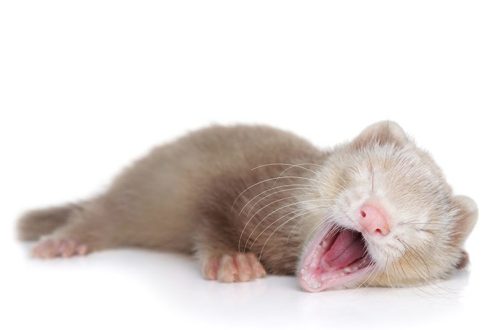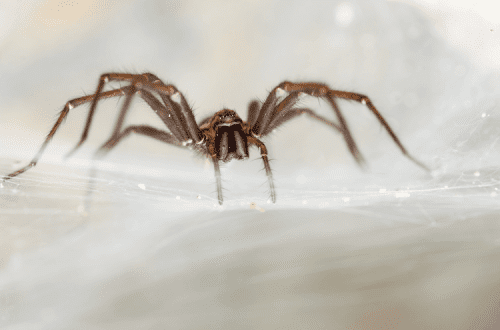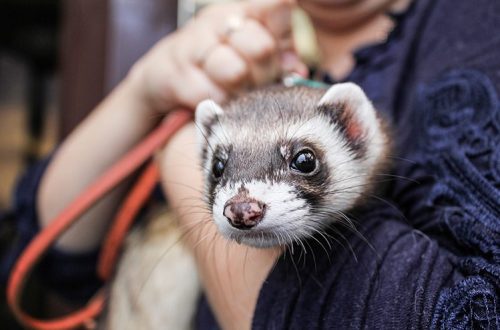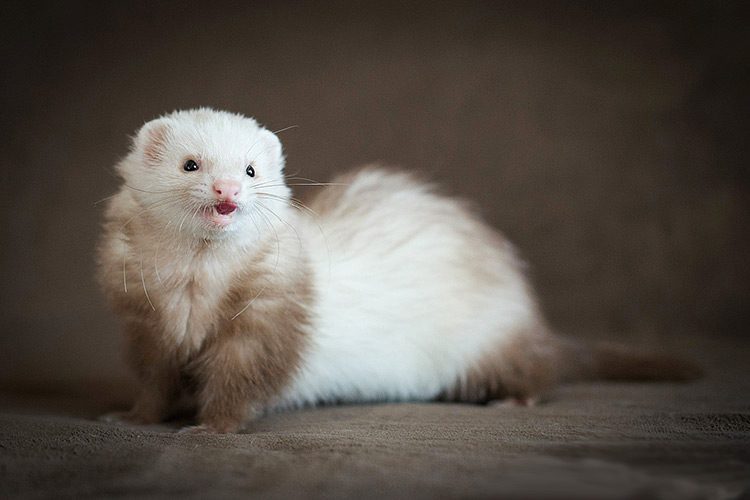
The domestic ferret is the most cheerful pet
Ferrets are active, cheerful and very intelligent animals. If just a few years ago a ferret walking in the yard on a harness caused everyone’s surprise, today these amazing animals are being turned on more and more often.
Decorative ferret or, as it is also called, ferret is the domesticated form of the wild forest ferret. Unlike its closest relative, the ornamental ferret would not survive in the wild, but it thrives in an apartment setting. Ferrets are easy to educate, get used to the tray, are friendly with other pets, do not damage wallpaper and furniture, do not gnaw on shoes, and in general are very friendly, sociable and energetic pets that (if desired) easily find a common language with everyone around.
Appearance
The body of domestic ferrets is elongated and flexible. These funny animals are often called fluffy snakes, and all because they can get into such narrow places that it would seem impossible to get through. On average, the body length of a male from the tip of the nose to the base of the tail is 45-40 cm, and females – 35-40 cm. The tail of the animals is long, mobile and very fluffy. The color of the coat can be very diverse, the most common colors are sable, black sable (darker than usual), pastel, champagne, chocolate and others, the combination with eye color can also be different. Albino ferrets deserve special attention, which, due to their original appearance, are very much appreciated by many breeders.

Character
Despite a number of features inherent in all ferrets, each animal is primarily an individuality, and much in the character of a pet depends on its natural characteristics and upbringing.
It cannot be said that ferrets have an easy character: they are smart and wayward animals, who in their behavior are guided by their own benefit and never follow commands in order to please a person, like, for example, dogs. Nevertheless, ferrets perfectly understand the owner and capture his mood, it is interesting and pleasant to communicate with them. However, it should be borne in mind that ferrets often become aggressive during the breeding season, so at the age of 7-8 months it is better to sterilize (castrate) them. Such measures will help you cope with such an unpleasant pet habit as marking the territory, which is a matter of concern for many inexperienced owners of small, wayward predators.
Ferrets love to be in motion, they are very active, curious, always exploring the world and striving for new discoveries. When getting a ferret, you need to prepare for the fact that this pet will examine everything around and climb everywhere it can get. But despite their crazy energy, domestic ferrets sleep a lot: about 16-20 hours a day.
Interestingly, ferrets can only distinguish shades of red and gray, but this feature is more than compensated by the sharpest hearing and excellent sense of smell.
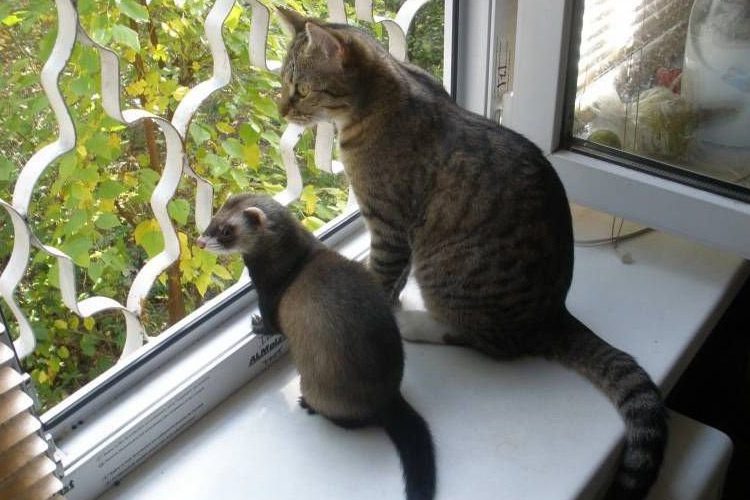
Lifespan
The average life expectancy of a ferret with proper maintenance is 10-12 years.
Features of maintenance and care
Ferrets are suitable for active people with a strong, responsible character who will deal with a wayward and sometimes even too independent pet with desire and interest. From time to time, these animals like to demonstrate their character, but correct, patient and moderately persistent training quickly bears fruit.
However, ferrets have a number of natural habits – and no amount of education can fix them. Such habits include, for example, the passion to dig the earth, originating in the natural instinct of arranging a hole. Therefore, be sure that your ferret will definitely get close to all the available flower pots in the house and during the walk will run with rapture to dig a mink on the nearest lawn. Ferrets also love to hide food “for a rainy day”, but do not rush to scold your pet for such a precaution, because this habit so often saves the lives of his wild brothers!
In general, ferrets are quite unpretentious in maintenance and care. You can let the pet walk around the apartment, or you can keep it in a spacious aviary – this will also be to the taste of the ferret, but from time to time it will need to be released to walk around the room.
More than anything, mobile animals love to move and play, they can enthusiastically chase teasers for hours, run after balls, making various somersaults in the process of movement. Such games are pure pleasure that brings a lot of positive and positive emotions to both pets and the owners themselves.
During the walk, the ferret must wear a harness., otherwise, no matter how obedient your pet may seem to you, he will run away as soon as he feels free. As a rule, ferrets are walked on a leash, like dogs, or they hold the animal on their shoulders. For walks, you can use a special carrying bag, which is quite convenient.
Pet ferrets are naturally healthy, but that doesn’t mean you can forget about a visit to the vet. On the contrary, just like cats and dogs, ferrets need routine check-ups and, of course, vaccinations. Vaccinations are necessary to protect the animal itself and all those around it from various diseases.
Twice a year – in autumn and spring – ferrets molt, and molting can be quite strong and cause certain troubles to the owners. The problem is easily solved with the help of a furminator, and the molting process itself does not last long.
As for nutrition, the basis of the ferret’s diet is animal food, because ferrets are not rodents, but real predators. It is better to use quality prepared ferret food, as their composition is carefully balanced and you do not have to spend time preparing a special diet. Clean, fresh water should always be freely available to the pet.
Ferrets are easily accustomed to the tray, but the cleanliness of the tray must be maintained daily, otherwise the capricious pet will choose a more tidy place for its needs.
Bathing ferrets is recommended no more than 2 times a month, with the help of special means. The claws on the paws are periodically shortened with a nail cutter (about once a month).
A bit of history
Domestic ferrets have a very long history, and it is not clear exactly when the first animal was domesticated. But according to some sources, this happened about several thousand years ago.
According to one version, the closest ancestor of the domestic ferret is the albino black African polecat, but most researchers believe that the decorative form originated from the steppe polecat.
In Russia, ferrets were bred as pets not so long ago, only about 15 years ago, while in America and other countries these animals gained popularity much earlier. Today, interest in ferrets in our country is growing rapidly, and more and more new people are turning on amazing, funny fluffies.



